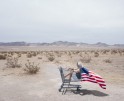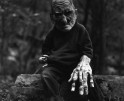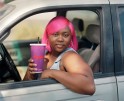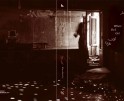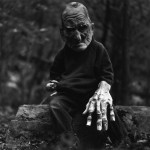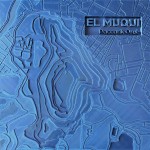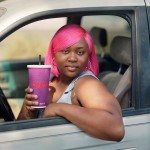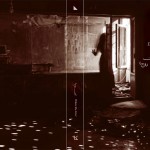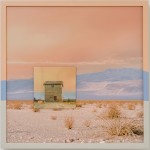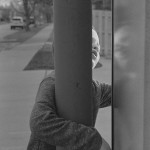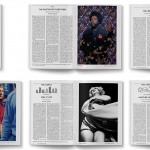Jorge Ariel Escobar: I Think We Could’ve Been Something
Lenscratch recently held its annual(-ish) call-for-projects, and the response was impressive. In total, there were over 500 submissions. We are eager to look through each of these entries and share some highlights over the months to come. Today I am in conversation with Jorge Ariel Escobar about his project I Think We Could’ve Been Something.
Jorge Ariel Escobar (b. 1994) is a queer/Latinx image-maker who holds an MFA from the University of Wisconsin-Madison, where he was an Ed-GRS Fellow and received the Temkin Exhibition Award. His photographic work focuses on intimacy and desires, highlighting the ephemera qualities of short-term romantic encounters between queer men, as well as portraying the male form through a softer lens. Recent solo exhibi+ons include the Wriston Art Galleries in Appleton, WI, and the Common Wealth Gallery in Madison, WI. Other credits include group exhibitions at the Trout Museum of Art (Appleton, WI), the Center for Fine Art Photography (Fort Collins, CO), Candela Gallery (Richmond, VA), The Image Flow (San Anselmo, CA) and the Museum of Contemporary Photography (Chicago, IL). He has further attended residencies and workshops at AZULE (Hot Springs, NC), Penland School of Craft (Bakersfield, NC), and Anderson Ranch Art Center (Snowmass Village, CO). Jorge’s work is included in the permanent collection at the Museum of Contemporary Photography and was awarded First Place at the TMA Contemporary Exhibition at the Trout Museum of Art.
Jorge currently lives in Milwaukee, WI, where he is a lecturer at the University of Wisconsin- Milwaukee.
Instagram: @__jorgearielescobar
I Think We Could’ve Been Something
Through photography, I establish connections with queer men I meet on dating apps, through mutual friends, orfrom past relationships. I perceive my method of image-making as a date between myself and my subject,where we connect, get to know each other and share an intimate space. Together, we collaborate to createimages that hint at moments of intimacy or deeper relationships. I reflect on the ephemera of theseconnections, such as the moment before a kiss, the feeling of decompression afterward, or how my hand rests gently on their leg. I capture the male form in a softer light, describing my photographs as a form of tenderhomoeroticism that contributes to the evolving photographic queer archive.
Additionally, my artistic practice blends digital image-making with analog darkroom printing and alternativetechniques. I am drawn to the fragility of the print and how it becomes a tangible object susceptible to damageor degradation from light. This fragility is a metaphor for the fleeting intimate relationships that inspire myimage-making.
Daniel George: What prompted you to begin making this work, and to explore your identity in this particular manner?
Jorge Ariel Escobar: My relationship to my sexuality I’ve always found to be complex. I grew up in a Latinx household where Catholicism was this overhanging religion in my life. Along with that the Latino community has always emphasized masculinity and this “machismo” attitude so I’ve always felt like I needed to be hyper masculine, but it never felt natural to me. I came out when I was 23 but I was still living near my family and for that reason even though I made the acknowledgment that I was gay I felt so uncomfortable going on dates or when someone would show interest in me. It wasn’t until I moved to another state for grad school that I felt much more comfortable going on dates and connecting with other queer men which honestly is what provoked this work. I was interested in exploring my own relationship to the men that I meet because I always found it so complicated. Even though I know people come out much later in life than I did, for me in my head I felt like I came out late because by the time I came out everyone around me had experienced so much in terms of intimacy and romantic relationships and I never had. Because of that this work and much of my art practice as whole has become my way of “catching up” with these experiences that I wished I could’ve experienced earlier in life. For that reason, I often call my photographs false memories of my own that I wish had happened or occurred differently.
DG: In your statement you write that decided on the lumen process due, in part, to its color palette and the way it “mimics the body when blood rushes to your head during intimate moments.” Would you elaborate further on the connection you see between your process and themes present in your work?
JAE: The lumen prints come out this rosey, pink which I associated to blushing. From the idea of blushing, I went to blood rushing through your body and the rush of blood to your head when you’re with someone who you feel a type of way with. I thought a lot about how when your intimate with someone your body heat rises and the warmth that creates within you when you’re with someone. I associate the pink to the skin and often when I was displaying the work casually in my studio and someone would see them, they would comment, “it’s skin color.” This concept of associating the lumen process to the skin goes deep for me because the images that I make are so much about the body and body contact that it to me made sense to make that connection with the process. Even further I think about the process of making lumen prints in which you lay a negative onto a sheet of silver gelatin paper and let it intentionally fog under UV light or whatever available light there is. This action causes the negative to leave this imprint of an image on the surface. Similarly, I associate the feeling of leaving an imprint on someone both in an intimate physical manner or simply an imprint on one’s memory. Their touch leaves this physical imprint on your skin in some way. The fragility of the lumen print is something I am still exploring with and when I think about someone leaving a physical touch or imprint on you and how that will begin to fade when they walk away from you, I think about the lumen process of how if you do not fix the print the image will fade away. Using a fixer bath for your lumen print preserves the memory otherwise that memory or that touch someone left you will begin to fade away.
DG: I would be interested to hear more about the collaborative aspect of this project. Why was it important that you subjects played a role, and in what ways is that manifest?
JAE: I think it’s important that my subjects feel comfortable with me and the space that we’re in especially since they have agreed to be photographed in such an intimate way. The collaboration manifests in different ways and it varies from subject to subject, but I think a big way where collaboration manifests starts before we even begin making images. It’s the classic “your place or mine” conversation. I personally like photographing my subjects in their own spaces because it 1) gives me a different space to work with and 2) they know their own space the best and therefor will be comfortable in the space. This to me brings in the concept of consent and allowing one to enter your most private space. During the photo sessions we are continuously speaking with one and other and having a back forth. Often a lot of my subjects I meet for the first time the day of the photo session, so I sometimes equate these sessions as a “date” because we are getting to know each other. As the session progresses, we both begin to get more comfortable with each other and that’s when I might ask them how they feel about an image I just took or ask them what we could try differently. The whole idea is we’re making these scenes that allude to something deeper and that could mean something different for everyone so it’s all an act. I don’t have any background in theater or acting but I think of it like we’re stage partners or co-stars. With acting it’s a collaboration between the two actors and similarly I feel I should adopt the same mentality when I’m photographing my subjects because we’re both being vulnerable with each other in this space.
DG: It is evident from your writing and your imagery that you intend to highlight “intimate details” with these individuals. Oftentimes we remember more significant events in the course of our lives, but what value would you give to fleeting moments?
JAE: I often find the fleeting moments in life to be the most impactful for me. My memory is funny because I have always remember the most obscure things that have happened in my life things that I feel no one would really remember. In relation to this work, I remember these small details from a larger memory as this moment where I personally felt desired or wanted by someone else. I think that all goes back to repressing my sexuality for much of my life because I knew from an early age, I was gay but was in denial and buried it deep. So, because of that whenever I am intimate with someone it is this huge thing for me and then when I break it down further, I just like replaying the moments before or after. I like remembering the building tension before we kiss or the moment after when we’re just lying next to each other slowly touching each other’s skin. For me I just think these moments feel so much more significant because they feel like you’re in a liminal space where nothing can hurt you and you truly are able to forget about what is going on in your life or the world and it’s just this small moment where everything feels right. I have had multiple partners in my life that have only been for one night. Sometimes its these partners that I go back to in my memory because even though it was just one night it had some significant impact on me in one way or another. The fleeting moments I shared with them are the moments that tend to stand out to me, and I just really focus on the feelings I felt in those small seemingly insignificant moments because often times those were when I was feeling the most happy or content without any over thinking.
DG: Throughout the creation of this work, are there aspects of identity that you chanced to discover? Maybe this is a deep question, but as you have been focused on your experience, what has been revealed about yourself?
JAE: I think there definitely are aspect of identity that have come up with this work. I’ve discovered a lot about myself or more so confronted a lot about myself which I feel will develop into new work in the future. I think the big thing that came out is my own body dysmorphia that I have dealt with my entire life. Coming from Latinx upbringing and being an immigrant myself I automatically always felt othered, not to mention realizing I was also gay. When I was younger, I desired to be more “American”, I desired to be the “boy-next-door” and the aesthetic of this was always presented to me in the media as white, slim, fit, blonde, blue eyes, etc. and that obviously wasn’t me and couldn’t be because I’m just made differently. All of this to say is with this project after it was said and done (although I am not done with lumen printing), I think in some ways this work had this underlying theme of not only romanticizing these moments of short-term romances but also romanticizing the male body that I always desired for myself.
Posts on Lenscratch may not be reproduced without the permission of the Lenscratch staff and the photographer.
Recommended
-
Martin Stranka: All My StrangersDecember 14th, 2025
-
The Family Album of Ralph Eugene Meatyard at the High MuseumDecember 10th, 2025
-
Paccarik Orue: El MuquiDecember 9th, 2025
-
Richard Renaldi: Billions ServedDecember 6th, 2025
-
The Art of Documentary Photography: Rania MatarOctober 25th, 2025





















